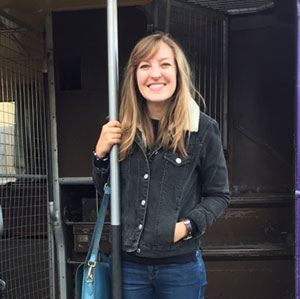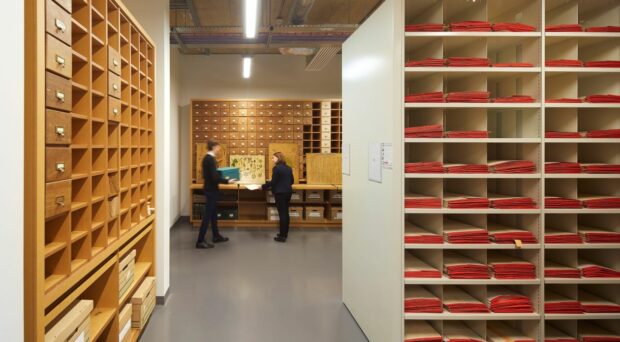When I joined the Museum of Classical Archaeology as Education and Outreach Coordinator back in 2013, one of my first actions was to set up a project to offer after-school Latin clubs in couple of local state-maintained primary schools.
Hot on the heels of having left behind a career as a Latin teacher, it seemed like an easy first project to introduce and played wonderfully to the strengths of our volunteer workforce: as a museum firmly embedded in the University’s Faculty of Classics, we have embarrassment of riches, really, in the form of our student body –a Faculty full of bright young things, eager to spread the joys of Classics. We started small with two schools and six volunteers but since then, the project has grown: this year, a team of fourteen volunteers are delivering Latin clubs across five primary schools, with over 50 children aged 7-11 taking part in the project in total.
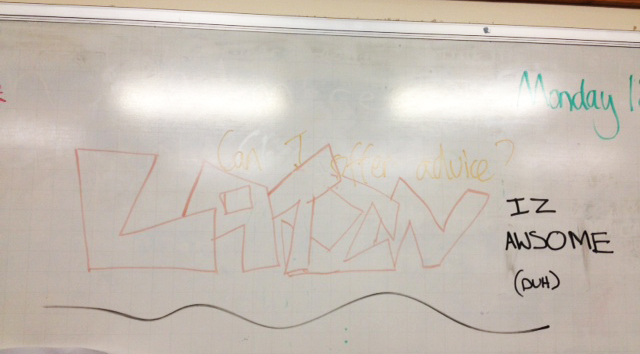
Those of you who were lucky enough to learn Latin at school, dispel your memories of tedious lessons spent chanting noun endings! Yes, our aim with these Latin clubs is, of course, to teach children some Latin but it is also to get them excited about the ancient world more generally. We follow the popular and successful Minimus Latin course, which is written with this age group in mind and not only introduces children to the language of Ancient Rome, but also to its culture and history. Let’s not forget: these children have chosen to stay after school to attend the club; with a busy day of school already under their belt, it’s important that we make these sessions fun. Latin club sessions have been known to involve singing Latin songs (with ukulele accompaniment!), making mosaics, designing a Roman menu, dressing up in togas, and acting out Greek and Roman myths. It may seem strange, as a Museum-run initiative, for this project not always to be object-focused but the volunteers often incorporate learning from replica items (such as oil lamps, wax tablets and sponges on sticks –the Roman equivalent of loo roll) and images of ancient objects into the sessions. Feedback has been positive from pupils, their parents and the schools. When asked what they enjoyed about the club, pupils said:
“I have enjoyed the Latin a lot because it is fun when we did plays and we made tiles. It’s been great fun and I have been learning lots.”
“I enjoyed making Latin posters and reading myths.”
“Absolutely everything!”
Why learn (and teach) Latin?
But why learn Latin, you might ask? Why study a dead language? It’s a question those of us who study the ancient world face pretty often and we battle with the misconception that learning Latin is for a privileged minority all the time. The charity, Classics for All, which champions and helps fund the study of Classics in primary and secondary schools across the UK, provides excellent ammunition in response to these questions on their website: learning Latin has been shown to improve pupils’ literacy, it paves the way for learning modern foreign languages and it helps pupils to develop analytical skills; moreover, studying the ancient world not only gives pupils the chance to understand the foundations of western culture and civilisation but also promotes understanding of the differences between cultures –a quality not to be underestimated in our multi-cultural society.
It can be hard to find out exactly how many schools are teaching Latin across the county, but, to give a rough idea, a study into language learning in schools undertaken by the British Council and the Education Development Trust in 2015/2016 suggests that 18% of state secondary schools in the UK teach Latin. (The number will be lower still for primary schools though it’s worth noting that Latin is accepted in the National Curriculum as a language primary schools may teach as opposed to a modern foreign language.) If our mission here at the Museum of Classical Archaeology is to engage the widest possible audience with the ancient world (not just in engaging with the objects that we hold but also the cultures which produced them), then we are proud to be exposing more young people to the language and culture of Ancient Rome.
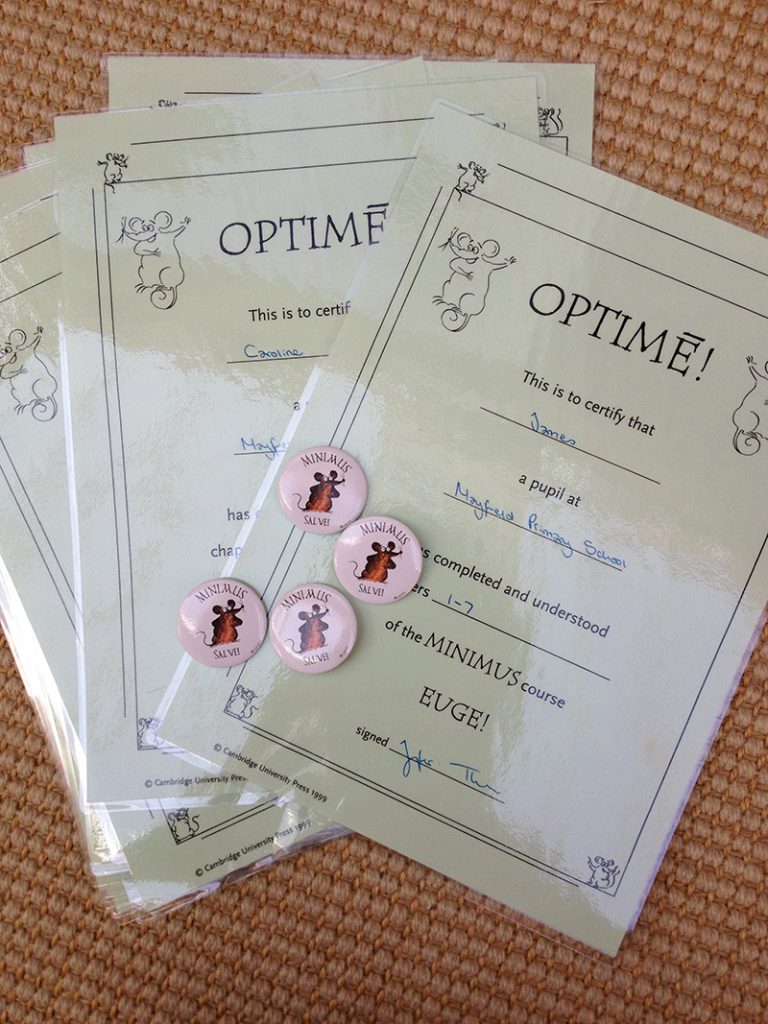
Running the Project
Running the Museum’s Primary Latin Project is no small undertaking. Each year a new group of volunteers is recruited. In order to start teaching in schools, they need to be trained in planning and delivering engaging sessions, behaviour management and safeguarding. Each volunteer must undergo a UK Disclosure and Barring Service check and, in the case of international students, an equivalent check in their country of residence – this is the bit that really pushes my administrative skills to the max! On top of this, a lot of time is spent liaising with schools to make arrangements for the clubs to take place, visiting each school once a term to observe the Latin clubs and give feedback to the volunteers, arranging get-togethers for the volunteers to share their experiences and ideas over a cup of tea, and ensuring that each pupil receives a certificate and a small reward at the end of the course to celebrate their achievements.
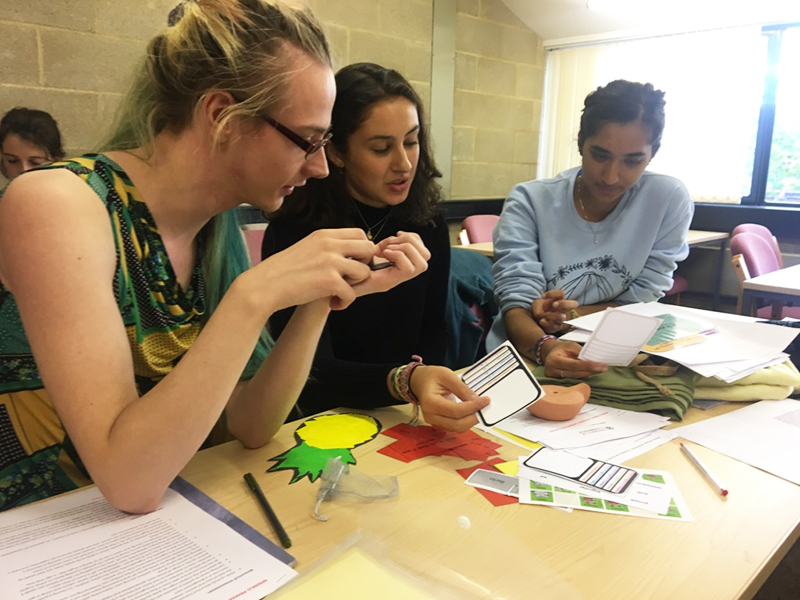
None of this would be possible, of course, without our team of fantastically dedicated and enthusiastic volunteers, who plan and deliver the Latin club sessions and trek out to the primary schools come rain, shine and even snow. We like to think that there are benefits for our volunteers as well as for children who attend the clubs. These volunteers take part in a long-term project, through which they have a lot of autonomy and responsibility. They have the chance to hone their teaching skills and gain hands-on classroom experience and are given training and feedback to help them to develop as teachers. We’re very proud to say that more of the volunteer alumni of this project than I can count have gone on to embark on PGCEs, become Latin teachers and work in university outreach; we hope that their experiences running our Latin clubs helped them to achieve their goals and we’re delighted that they’ve chosen to continue working with young people.
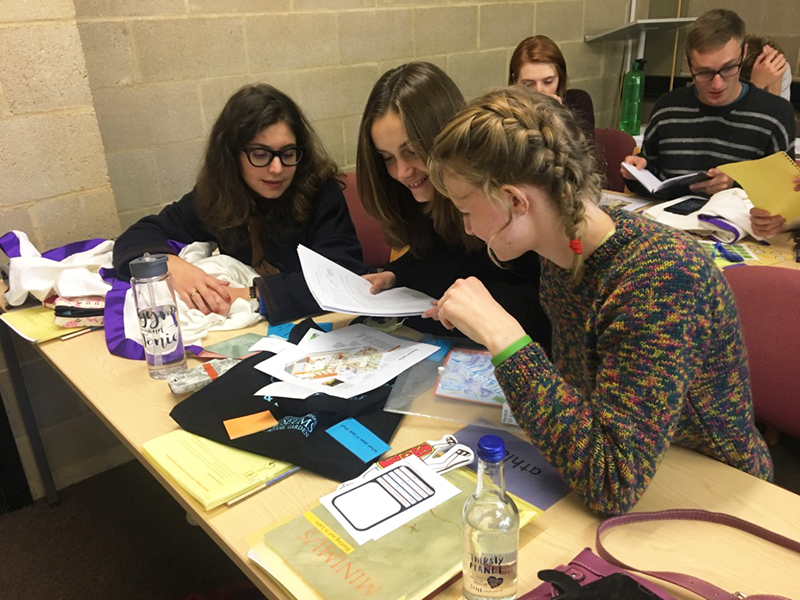
A volunteer’s perspective
Since my role is simply to organise this project, I would like to end with volunteer and Classics student, Anya Morrice, speaking of her experiences running a Latin club at Newnham Croft Primary School last year. Anya enjoyed taking part in the project so much, she has returned for another year and is now running a brand-new club at new partners for 2018/2019, Park Street CE Primary School:
Have you enjoyed taking part in the project this year?
Definitely. Running a Minimus club has been very fun.
Do you have any highlights from your time running the club?
I really liked whenever the children enjoyed an activity so much that they wanted to do it again another week, as happened with plays or writing letters like the Romans. Another weekly highlight was the (almost) never-ending enthusiastic questions about the Romans and Latin.
What sorts of activities have you done with the children in your club?
The children loved acting so we often did plays on topics like Pandora’s Box and ancient heroes, or pretending to be a miniature Roman legion. We also did lots of other activities from reading the Minimus Latin cartoon strips to word-searches, and matching cards of Latin words or mythological figures.
What do you think the children get out of learning Latin and about the ancient world?
Other than the fun of learning about the Romans, the children improved their awareness and understanding of grammar. The Minimus book also encourages the children to use their knowledge of Latin to work out the meaning of unfamiliar English words.

